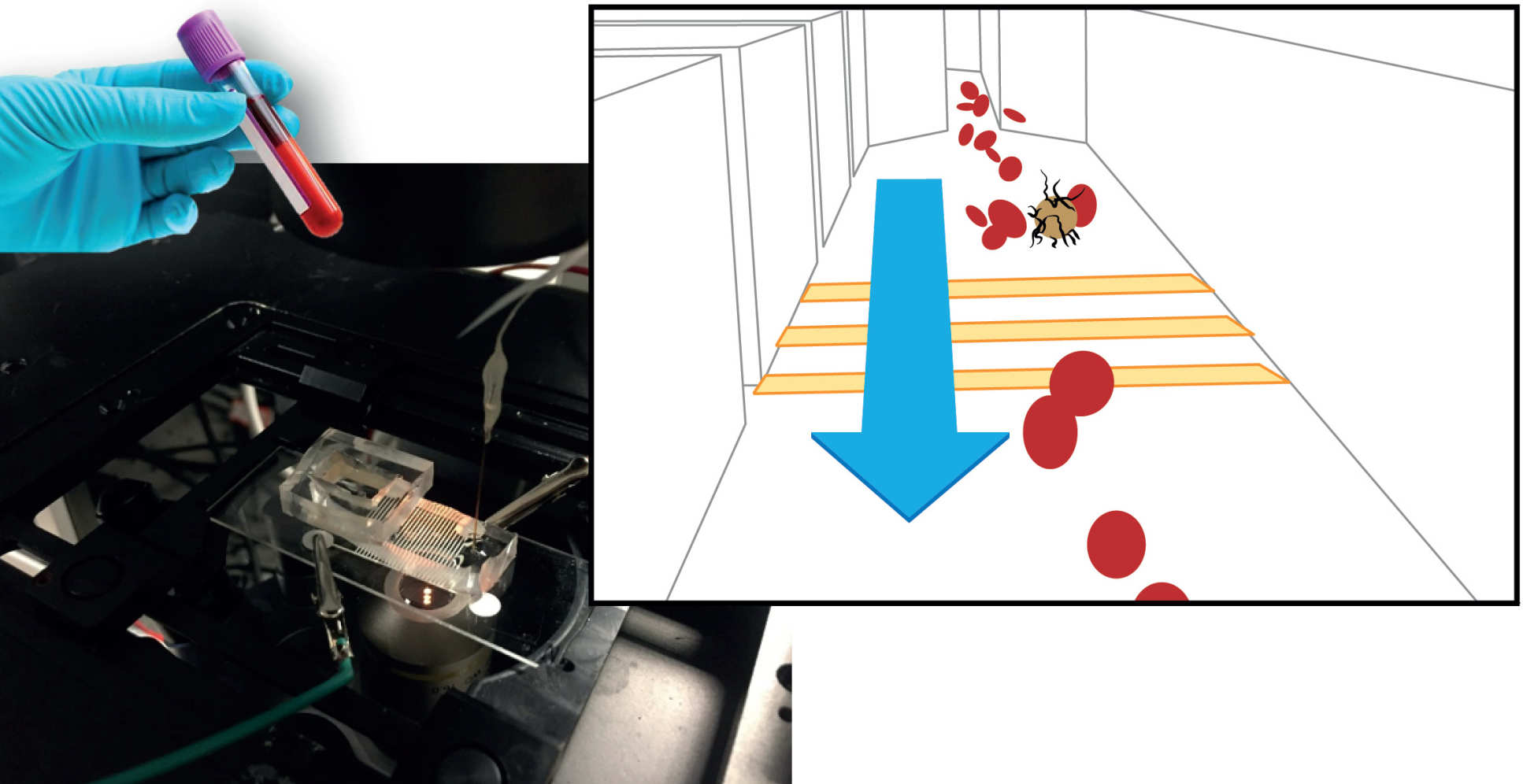Detecting cancer cells in the blood
Metastasis – the process whereby cancerous cells migrate from a primary tumour and seed new tumours – is a function of many human cancers (e.g., breast cancer) and is the cause of 90% of cancer deaths. Moreover, the life expectancy of patients with metastatic breast cancer is normally on the order of months.
An intense level of ongoing research is therefore focused on isolating such metastatic cancer cells from the blood. It is also the aim to develop functional drug screens to guide patient therapy and to ultimately improve patient life expectancy and outcomes.
Within this wave of research, the feasibility of using organic electrochemical transistors (OECTs) to measure key molecules excreted by cultured breast cancer cells was investigated in a IMSE seed-funded project – Can novel solar cell polymer technology be used to detect cancer cells in the blood? – led by Professor Eric Lam (Department of Surgery and Cancer), Dr Ali Salehi-Reyhani (Department of Chemistry) and Professor Mustafa Djamgoz (Department of Life Sciences).
This IMSE-funded proof-of-concept study represented a novel use of OECTs, which have been developed as technology for solar energy harvesting applications.
This novel application of OECTs is possible because the increased anaerobic metabolism of cancer cells gives rise to a higher lactate output compared with non-cancer cells. It is therefore be possible to use biofunctionalised OECTs to detect if a cell has an altered metabolic expression, and to develop these devices for the detection of cancer cells in the blood. As part of the project, the biofunctionalisation of the devices was tuned to include a range of enzymes.
In parallel, whole-cell patch-clamp recordings on drug-resistant and non-resistant breast cancer cell lines were made so that ion channels – which can be easily targeted with both drugs and antibodies – may be developed as novel clinical tools.
By comparing the preliminary OECT and patch-clamping data, key differences between different cell line strains can be studied as a first step to the realisation of new technology that will hopefully make a substantial difference to patient lives.


